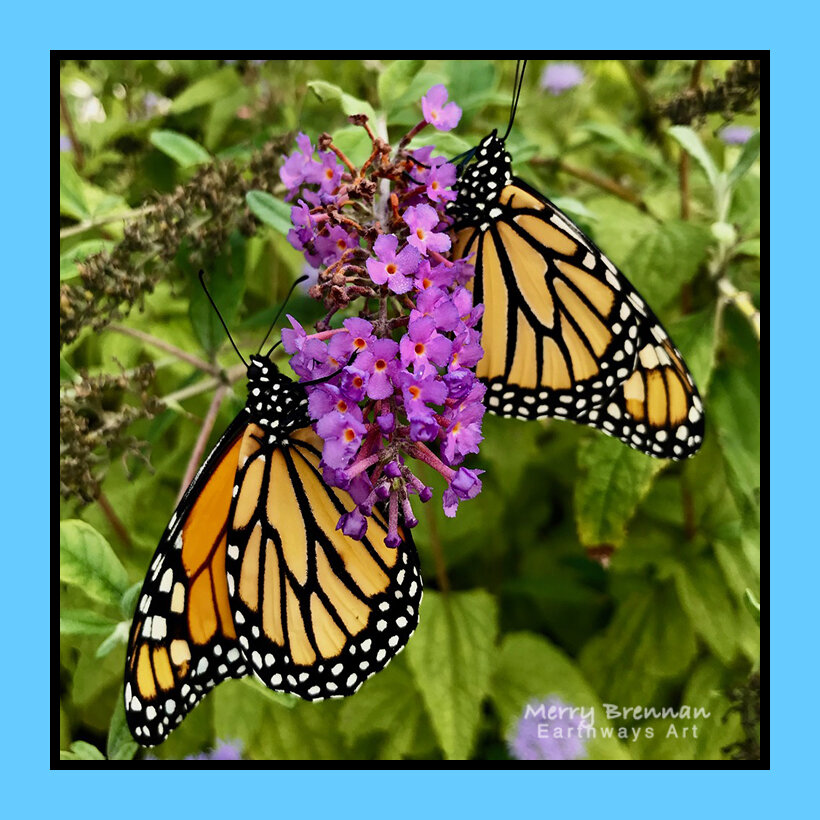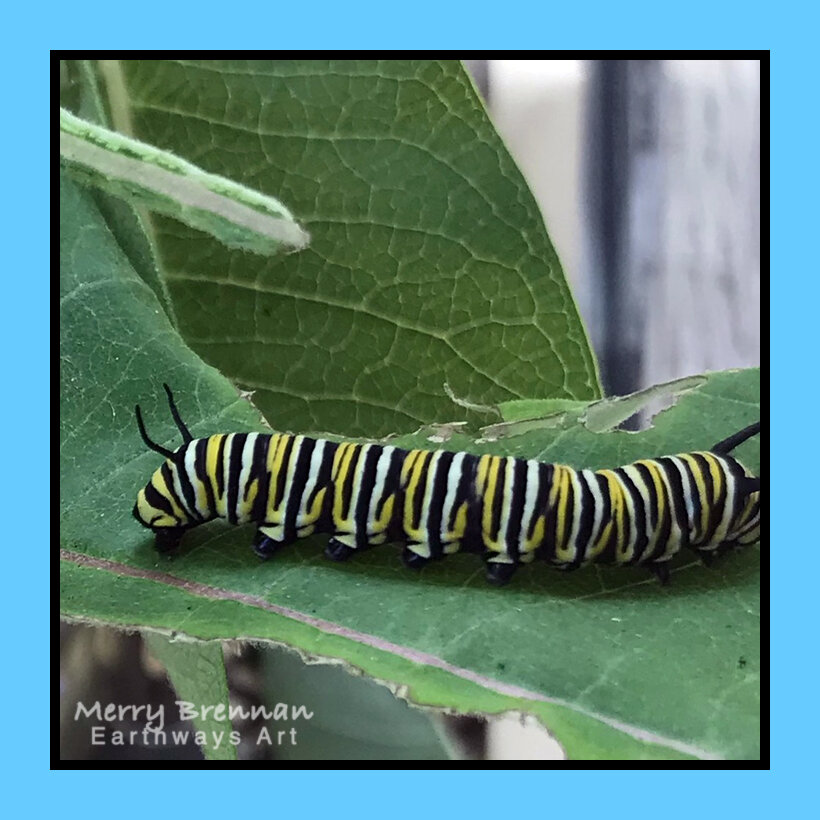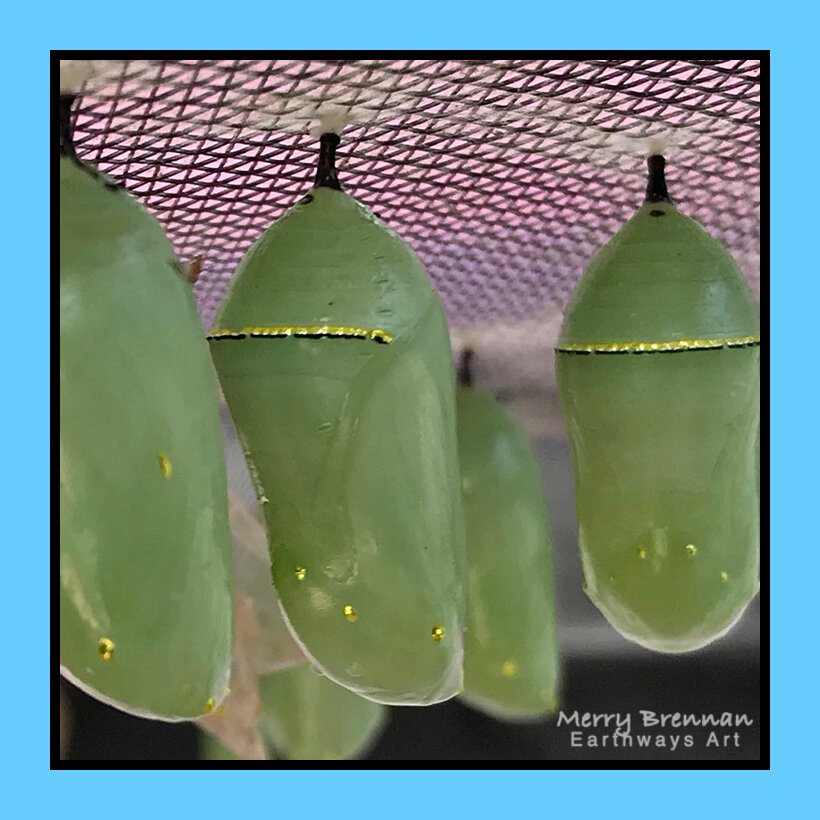My Very Hungry Caterpillars
I’ve been raising monarchs for years. Or, more accurately, they’ve been raising themselves. All I do is look for teensy white eggs on the underside of my garden milkweed each summer and put the stalks in a tank to protect them from predators. Then I just sit back and watch the show. Hundreds, maybe thousands of butterflies later, I’m still awestruck every time.
The caterpillars hatch as scant threads, too small to see. I only know they’ve emerged by pinprick holes in the milkweed, signs of their first meals. Thanks to Eric Carle’s beloved book, you know the rest of the story: they eat and eat and eat, bulldozing through hundreds of times their weight each day. I fill the tank with loads of juicy milkweed and come back just hours later to find my cats, as I call them, clumped on barren stems.
Over days, I notice their black, white and yellow stripes expand until, about the size of my pinky finger, they finally seem too bloated to continue – sort of like the restaurant character in Monty Python’s Meaning of Life. Only, instead of taking one more bite and exploding like Mr. Creosote, each caterpillar hangs itself up with self-spun silk, sheds its colorful skin, and hardens into a stunning chrysalis.
From my vantage, all appears still and beautiful. But here’s the thing: inside the green gem with its gold rim, an astounding action flick unfurls where enzymes digest the caterpillar’s tissue, leaving a rich formless goo. Little cells, called “imaginal disks,” start growing like crazy. Similar to embryonic cells, four imaginal disks become wings, others form legs, antennae, organs, and everything a butterfly needs, all feeding on the nurturing soup around them. Then, in less than two weeks, often as little as seven days, a beautiful monarch is ready to fly.
This miracle of metamorphosis only happens in insects. You’ll never see anything like this in mammals, or any vertebrates for that matter. Yet there’s something that strikes me about imaginal disks and the meaning of our lives.
What if we’re truly like hungry caterpillars, obliviously eating, eating, eating, completely unaware of the destruction in our wake? Instead of leafless milkweed, though, our consumption is leaving a swath of weather extremes, global conflicts, species destruction, and chronic unhappiness.
For the first days inside a chrysalis, there’s a battle between the caterpillar’s immune system (fighting to save it) and the imaginal disks, which finally triumph in forming a butterfly. Could the frenzy in the world mean we’re reaching the limits of our gorging; that we’re poised for our own metamorphoses? What if we have special kinds of imaginal disks, perhaps in the form of humans who inspire transformation? (I believe Peace Pilgrim was one of these amazing morphers.). Maybe, just maybe, it means that peace and beauty will prevail.
I didn’t make up this monarch metaphor, but I certainly like it. As I watch my caterpillars get bigger every day, I can’t help but imagine. Or should I say imaginal…




